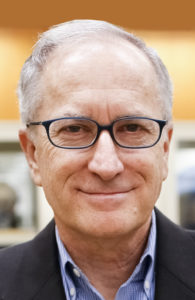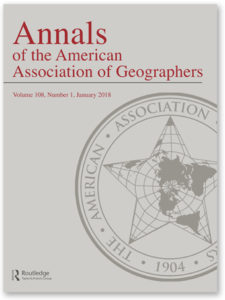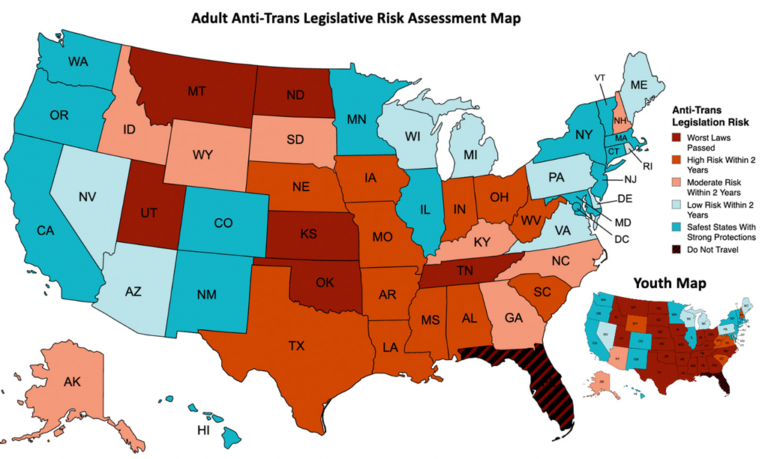How the AAG Selects Its Annual Meeting Venues
From the Meridian: a column by Doug Richardson

If ever you find yourself at a loss for conversation among a group of geographers, simply ask this one question: Where do you think the AAG should hold its next Annual Meeting? Everyone has an opinion on this question, and embellished memories of past meetings to recount; the only risk of raising this question is that the conversation may well go long into the night.
How the AAG Selects Annual Meeting Sites
Selecting AAG Annual Meeting sites is a lengthy and complex process. I would like to share with you the many steps and considerations that go into Annual Meeting site selection that have been in place for many years. As with most major academic associations, we contract for meeting sites about five to eight years into the future, and in blocks of three or four meetings at a time. This gives us negotiating leverage, minimizes costs, and reduces staff time by consolidating what is a very lengthy and complicated due diligence and negotiation process.
At the outset, the process involves a great deal of AAG member and Council discussion and input, as well as extensive data gathering, past history analysis, cost comparison, staff experience, research, and consultation with our professional conference managers firm, as well as geographical balancing of our meeting sites. We then develop and issue a detailed Request for Proposals (RFP) to several prospective cities, liaison with the bidders, conduct comparative analyses of all proposals, perform physical site inspections, weigh union hotel preferences, and enforce the inclusion of numerous specific contract stipulations that I have developed over the years to protect the AAG. All of these considerations go into the process of narrowing down feasible locations for our AAG Annual Meetings for each calendar year. With a shortlist of promising bids in hand, we then enter into detailed and careful negotiations of myriad contract provisions before signing an agreement with major convention centers and/or large hotels at a proposed site. If we cannot negotiate the costs and legal terms we require and which are favorable to the AAG at an initially preferred site, we are willing to cancel negotiations and start the above process all over again with an alternate potential city.
Finally, once we have completed lengthy negotiations and entered into major contracts for convention centers and/or large hotels at a particular year’s site, we then also must develop specifications and competitively bid out dozens of ancillary contracts for meeting services such as audio-visual services; internet availability; food and beverage obligations; overflow hotels; exhibitor booth agreements and exhibit setup services; special events needs related to workshops, field trips, and supplemental meeting room space; design, construction and setup of meeting registration structures and signage; mobile app and the printed program book; and many other agreements.
Why not small cities?
I frequently am asked why the AAG doesn’t meet in smaller cities such as Ann Arbor or Portland. The fact is that most cities are far too small to host our Annual Meetings. They lack the required number or concentration of hotel rooms and meeting rooms or sufficient airline flights to accommodate our 9,000 attendees. We do have a suite of mid-sized and lower-cost cities that we have used from time to time (most recently Tampa), but ironically these smaller city meetings are among our very lowest-attended meetings despite being our lowest cost venues. So it is not clear that lower venue costs correlate with greater access or attendance (or desirability). Costs of transportation are of course primarily a function of where one lives in relation to the meeting site, rather than the meeting site itself. This is why we try to rotate our meetings among different regions the country, so that each region is involved, and also of course so that geographers can experience many different places.
What about international AAG Meetings?
The AAG has on a few occasions held an Annual Meeting in Canada (Toronto and Montreal). I would love to hold additional AAG meetings in other international locations, from Mexico City to Vancouver to elsewhere. So why not?
One obstacle is that since 9/11, the U.S. borders with Canada and Mexico have become more difficult and uncertain to cross. At the same time, growing numbers of AAG members from other countries now teach or study on visas in the U.S. Many members have expressed concern that if they were to leave the U.S. to attend an Annual Meeting, they may not be able to return easily (or in some cases at all) to the United States. The AAG Council has considered the issue of international Annual Meetings on several occasions during the past decade, and each time the consensus has been it would not be fair to hold the AAG Annual Meeting in a location where a substantial number of our faculty and graduate student members would be unable to attend. It is of course always possible that domestic and international circumstances may change, or that the AAG Council’s position on this issue could change, but for now the consideration of fairness to these many members residing in the U.S. on visas remains the policy.
Controlling Costs at our Annual Meetings
Our conference manager consultants tell us every year that the AAG meetings are the best bargain of any of the dozens of meetings they help organize. We hold a full five day meeting, with elaborate and expensive A/V requirements for 80+ concurrent and fully equipped session rooms, as well A/V systems for large plenary and reception rooms, etc. Our meeting fees are very low and are well below those of nearly all other comparable geography meetings. In addition, our meeting fees have not been increased in many years, despite rising costs in almost every category of expense. The AAG also sponsors many programs which subsidize the costs of attending, including a very progressive registration fee structure for students, un- and underemployed members, and retired geographers, as well as mechanisms to subsidize travel and offset costs for students attending the meeting. Learn more about AAG Annual Meeting cost comparisons at our report, AAG Annual Meeting Fees: An Analysis.
Summary
We can always do more, but by all comparative measures, we are doing a very good job of keeping our meeting reasonably priced while providing an incomparable experience. This was illustrated by the responses to the recent McKinley Membership Survey, and also by the remarkable growth in the number of geographers and attendees from other disciplines deciding to attend our Annual Meeting every year. The reality is that thousands of geographers from around the world now choose to attend our meetings, despite the fact that they have dozens of other meeting options to choose from. So, we must be doing something right.
I hope this quick overview is helpful; we welcome questions and your input and would be happy to discuss any aspects of the AAG Annual Meetings in more detail with you. If you have any questions, please feel free to contact me (drichardson [at] aag [dot] org), Oscar Larson (olarson [at] aag [dot] org), or Kelsey Taylor (ktaylor [at] aag [dot] org). As always we welcome your insight and ideas for improving our annual meetings, and we look forward to seeing you in New Orleans in April of 2018!
—Doug Richardson
DOI: 10.14433/2017.0014


